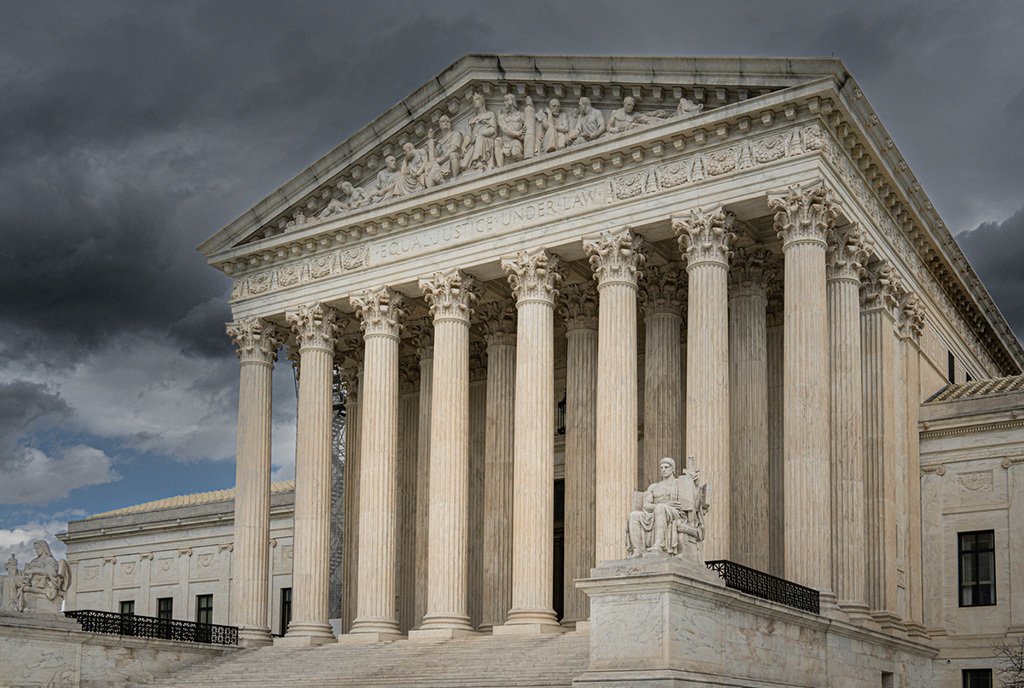
Climate justice is racial justice. There is no way to talk about equitable, effective, and just solutions to climate change without also talking about the disproportionate burdens that communities of color shoulder as the planet warms. The legacies of systemic racism and discrimination mean that today, communities of color are more likely to live in polluted, climate-vulnerable neighborhoods with limited capacity and resources to build resilience or bounce back after a climate disaster.
The inextricable link between race and climate vulnerability demands race-conscious policies to mitigate climate effects for these communities. But the Supreme Court’s recent decision to ban affirmative action in college admissions could derail progress in our collective fight to slow climate change and address the long legacy of racial injustice in this country.
To be clear, efforts to fight climate change by explicitly targeting race as a decision-making factor do not currently exist. Rather, the federal government and some states, including California, use complex, data-driven methodologies to identify “disadvantaged” communities where environmental pollution and poor socioeconomic outcomes are most prevalent. But because race is the number one indicator of people living near polluting facilities, we know that by any measure, low-income people of color suffer first and worst from climate change and its impacts.
Race-Conscious Policy
The inextricable link between race and climate vulnerability demands race-conscious policies to mitigate climate effects for [communities of color].
Even before the recent Supreme Court decision, legal constraints on race-conscious policy caused misunderstanding, tension, and division between frontline communities working on climate equity and the local governments representing them.
For example, the Biden administration decided not to include race as a factor in a screening tool designed to support the implementation of Justice40, an executive order meant to address environmental injustice by funneling resources to disproportionately impacted communities. In California, a state where affirmative action has been outlawed in education, public employment, and government contracting since 1996, legal constraints on the use of race-conscious policy has resulted in hesitancy to apply it even in areas where the ban is not in effect, such as in environmental policy.
Moving forward with a “colorblind” approach to climate justice risks making our efforts less effective, more costly, and slower. The formula for success requires that climate and race are as inextricably woven together in our solutions as they are in the world in which we live.
Still, places with decades-old bans on affirmative action show us how to advance racial justice in climate solutions, despite perceived legal limitations. We start by being race-conscious in our policy goals, seeking explicitly to combat discrimination and eliminate racial disparities. As Stephen Menendian at the Othering & Belonging Institute points out in his helpful legal guidance, federal law broadly permits government entities to try to reduce disparities, though the policy implementation—the specific mechanisms and criteria for distributing burdens and benefits to advance race-conscious policy goals—must generally be race-neutral. But we can be explicit about race in measuring what matters and assessing the racial impact of our policies.
The new affordable housing policy in Berkeley, CA, prioritizing residents affected by redlining and other housing discrimination, is a succinct example of this approach. The policy’s goal is explicit about race—to stem the loss of Black residents from the city. However, the implementation mechanism is race-neutral—affordable housing priority goes to people who have been displaced by transit infrastructure or live in formerly redlined areas. Gathering disaggregated demographic data on who gets the priority affordable housing will illuminate the extent to which the legal, race-neutral implementation mechanism is achieving the race-explicit policy goal and inform future iterations.
Sign up for our free newsletters
Subscribe to NPQ's newsletters to have our top stories delivered directly to your inbox.
By signing up, you agree to our privacy policy and terms of use, and to receive messages from NPQ and our partners.
The Impact of Banning Affirmative Action
The precedent-shattering affirmative action decision must be understood as just one part of conservatives’ broad and long-term strategy to undermine racial justice. Right-wing actors have always fought to preserve White supremacy in our institutions, including through the interpretation and application of the law. Over the years, they have reinterpreted the Equal Protection Clause of the Constitution to mean that the government should be colorblind except in very limited instances that address a shrinking set of court-defined “compelling state interests.” Even then, race-conscious government action is required to be narrowly tailored and pass a strict scrutiny test in order to be legal.
Right-wing actors have always fought to preserve White supremacy in our institutions, including through the interpretation and application of the law.The Trump-appointed majority on the court sent a strong signal that they take a dim view of efforts to explicitly advance racial justice with race-conscious government action. The prominence of the Supreme Court decision will almost certainly embolden conservative activists to launch even more lawsuits against any kind of government policy or program that appears to center race or serve the purpose of advancing racial justice. Government officials and their lawyers are likely to take preventive measures—such as narrowing or completely scrapping policy initiatives—to avoid the risk of being sued or losing a lawsuit, as we’ve already seen with Justice40.
Such chilling effects have the potential to significantly erode progress on climate resilience, especially for marginalized communities.
Movement Toward Equity
Despite the recent decision, our organizations and many others across the United States continue to advocate for and implement climate policy that addresses racial disparities through several key actions:
- Educate: Proactively share information about the link between racism and existing inequities in our world and inform decision-makers about the scope and limits of the SCOTUS decision.
- Unite: Connect with communities and grow our membership to incubate a large-scale, long-term strategy to build equitable climate policy.
- Pilot: Push forward race-conscious approaches to fighting climate change to test effectiveness and political will.
- Organize: Sign people up to vote, advocate to change government structures that hinder our progress, and win over hearts and minds by showing people how these issues connect to their everyday lives.
At the Greenlining Institute, our work linking climate work with equity underlies our advocacy efforts to include race-conscious language in state and federal policies. The institute advocates for policies and tools that make equity a rigorous practice rather than a commitment or ideal to strive toward. Equity for the institute means that policy design, planning, implementation, and evaluation include concrete steps that transform behaviors, institutions, and systems to support communities of color. This is why in 2020 the institute proposed legislation to create a statewide Office of Racial Equity. Our proposal ultimately resulted in the approval of a statewide Racial Equity Commission, tasked with creating a racial equity framework and moving California closer to an equitable future.
Similarly, the Just Solutions Collective works to broaden and deepen the understanding of equitable and effective policies and projects to build the capacity of BIPOC frontline communities to replicate, scale, and build support for justice-centered solutions. As a national movement partner organization, the collective works to implement equitable and effective climate policies and programs at a scale and pace that match the urgency of the climate crisis.
On a more grassroots level, The Chisholm Legacy Project: A Resource Hub for Black Frontline Climate Justice Leadership is rooted in a Just Transition Framework, serving as a vehicle to connect Black communities on the frontlines of climate justice with the resources to actualize visions through regenerative, cooperative, democratic systems.
We know from experience that race-conscious policies can effectively tackle discrimination and build climate resilience. In the face of attacks on race-conscious policies, climate justice leaders, policymakers, and local governments must continue to come together to affirm their shared commitment to racial justice and collaborate on strategies that meet this moment.










